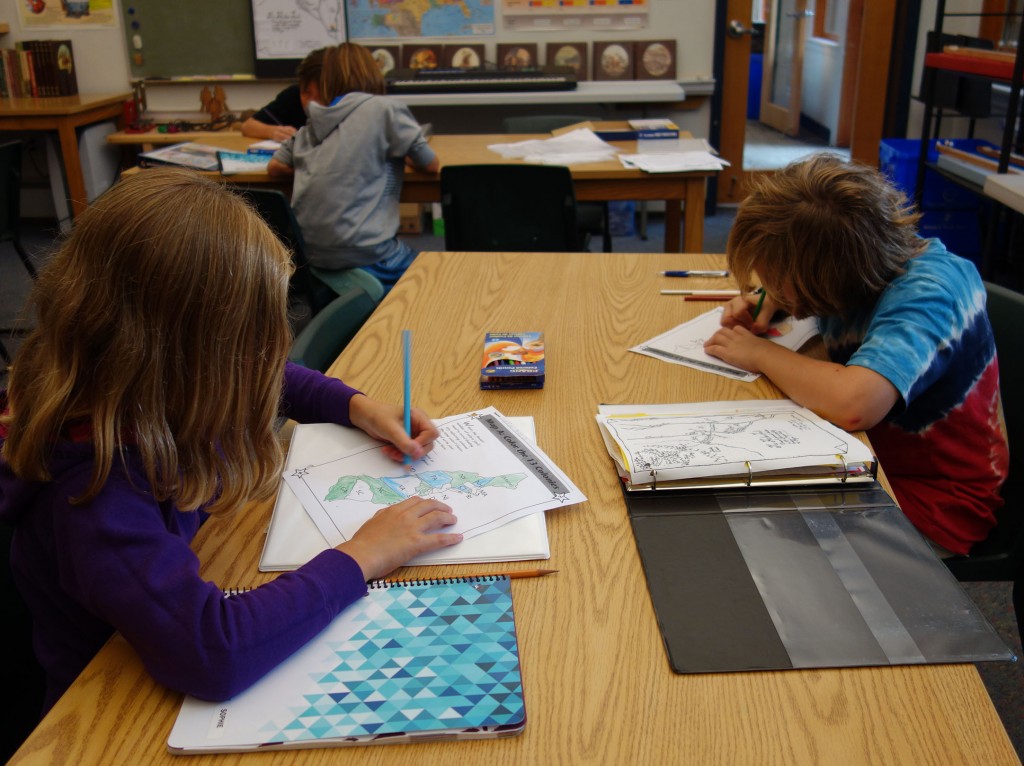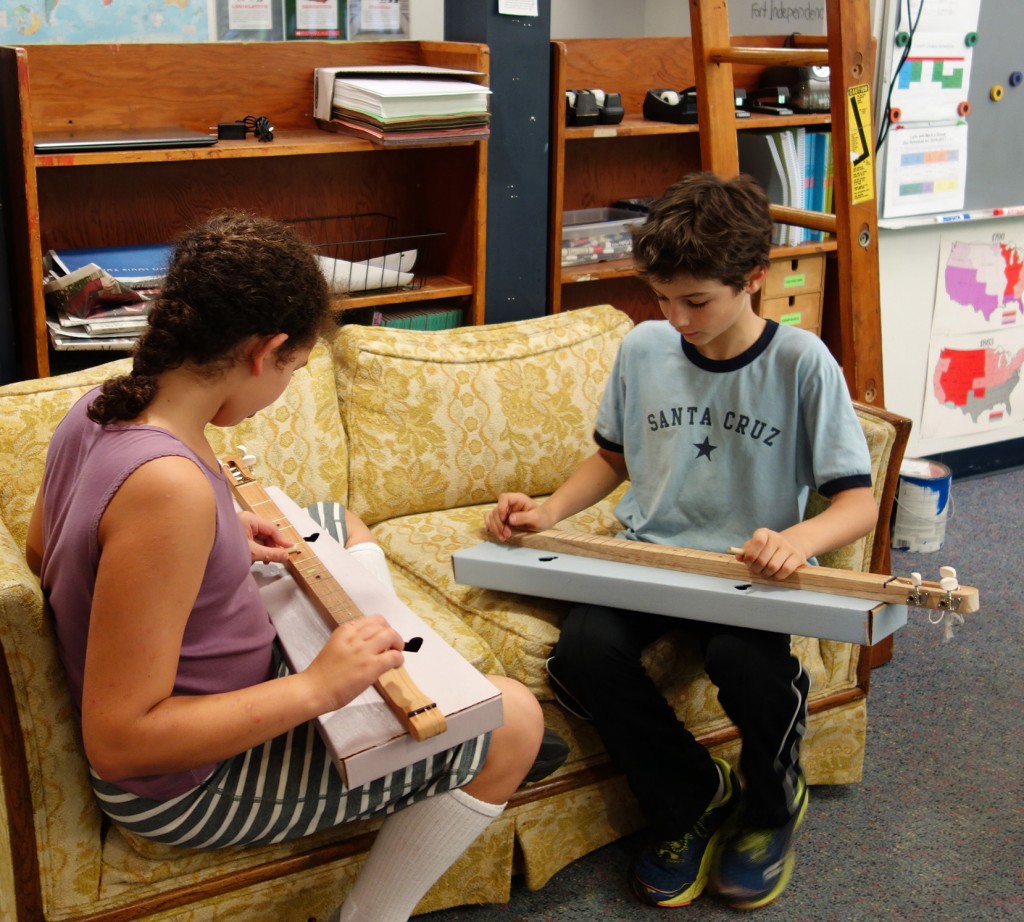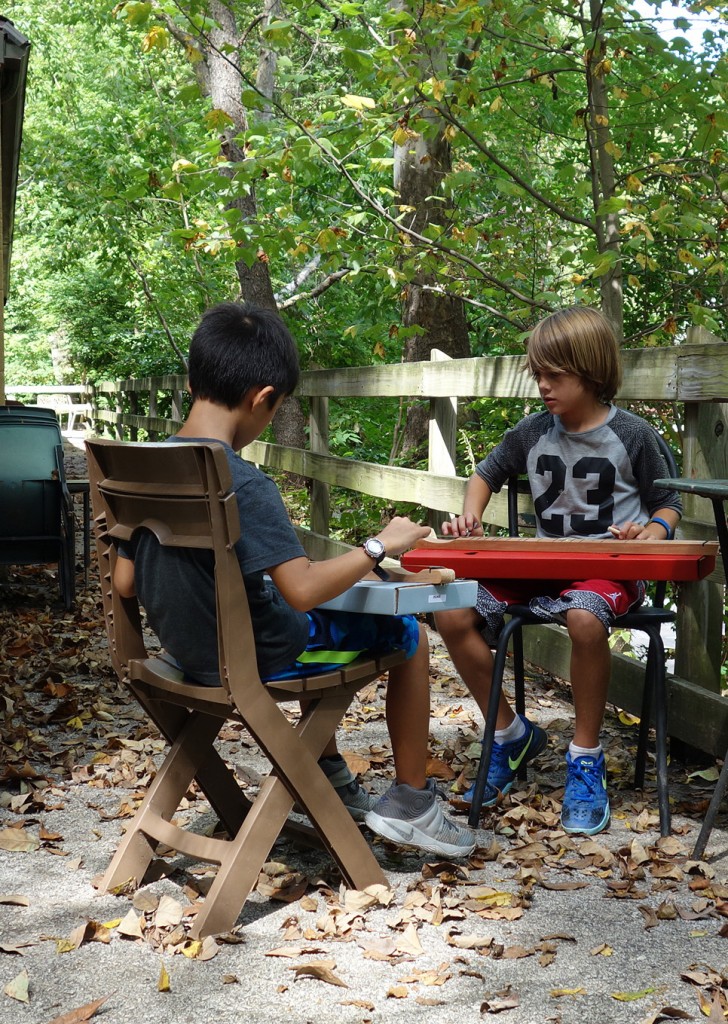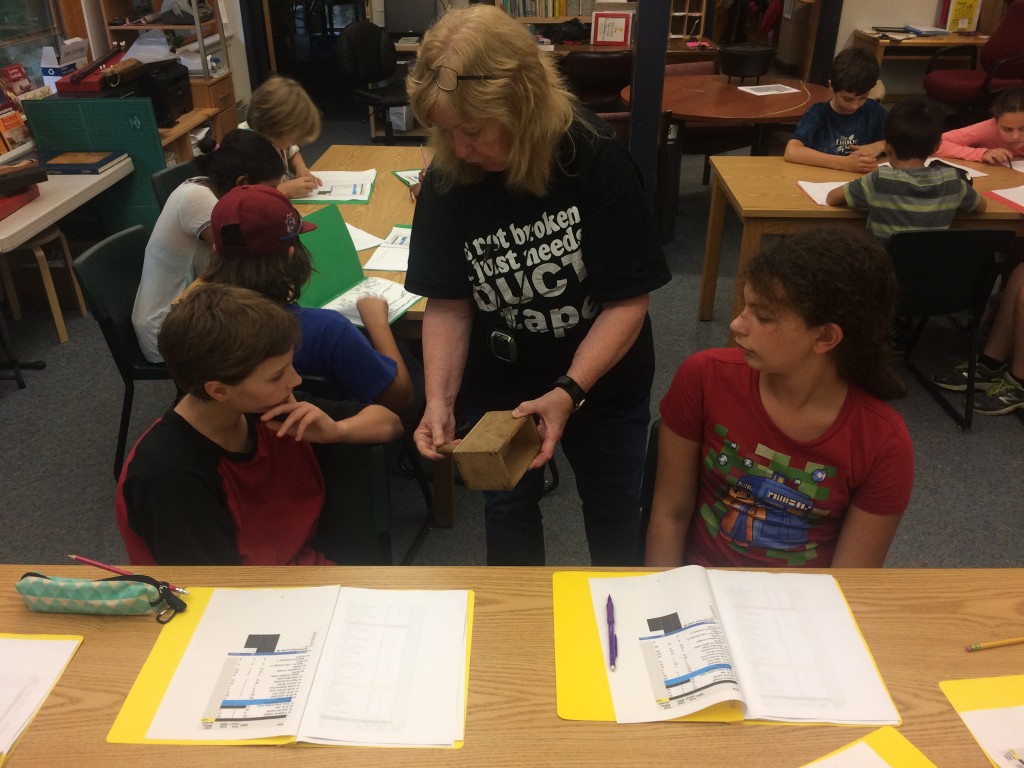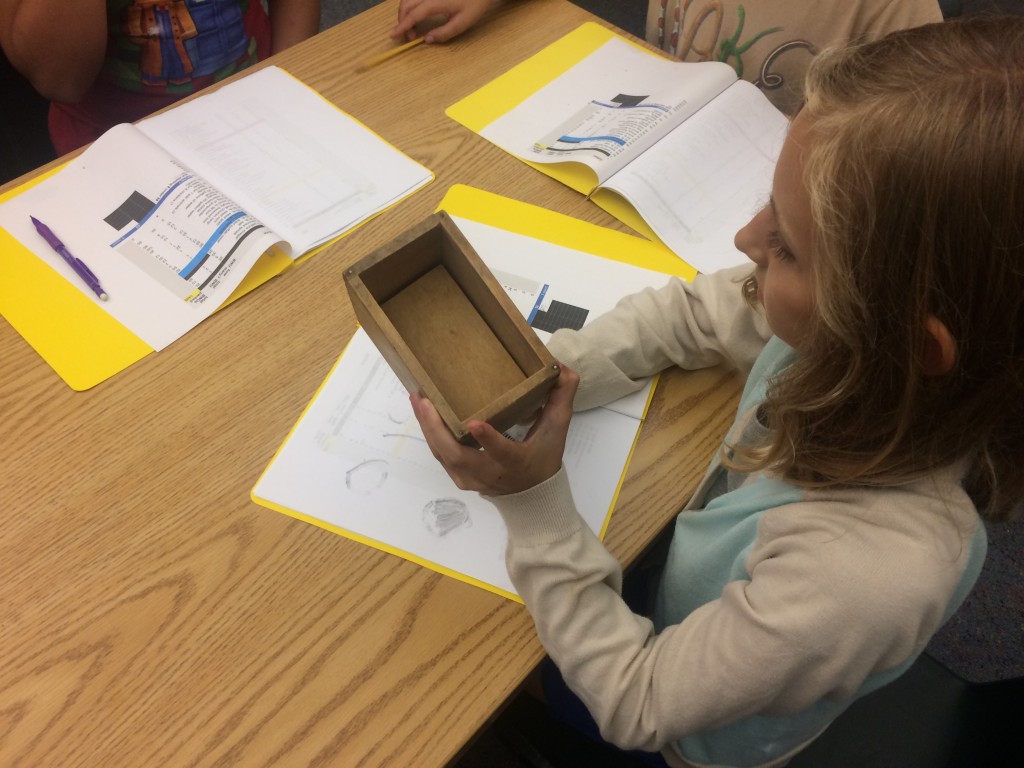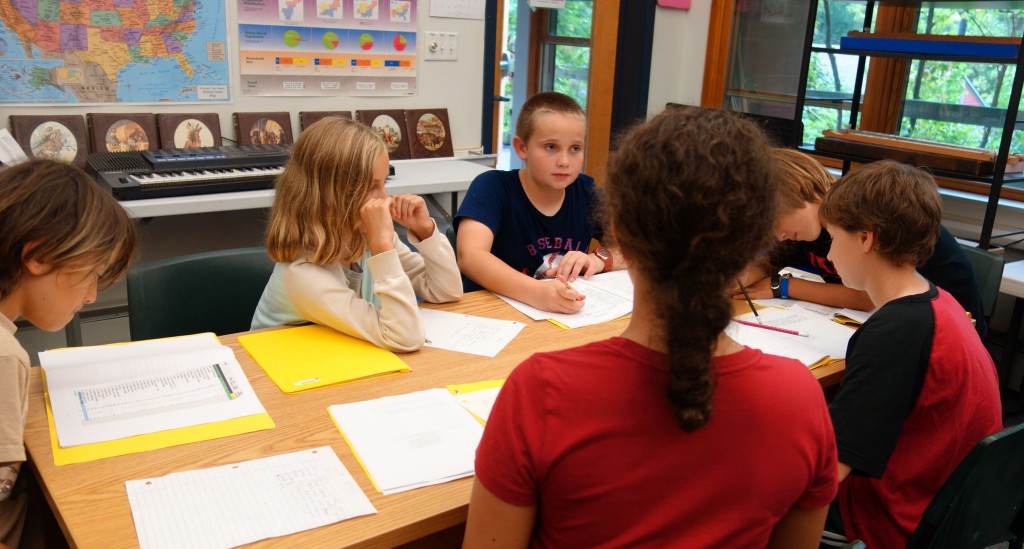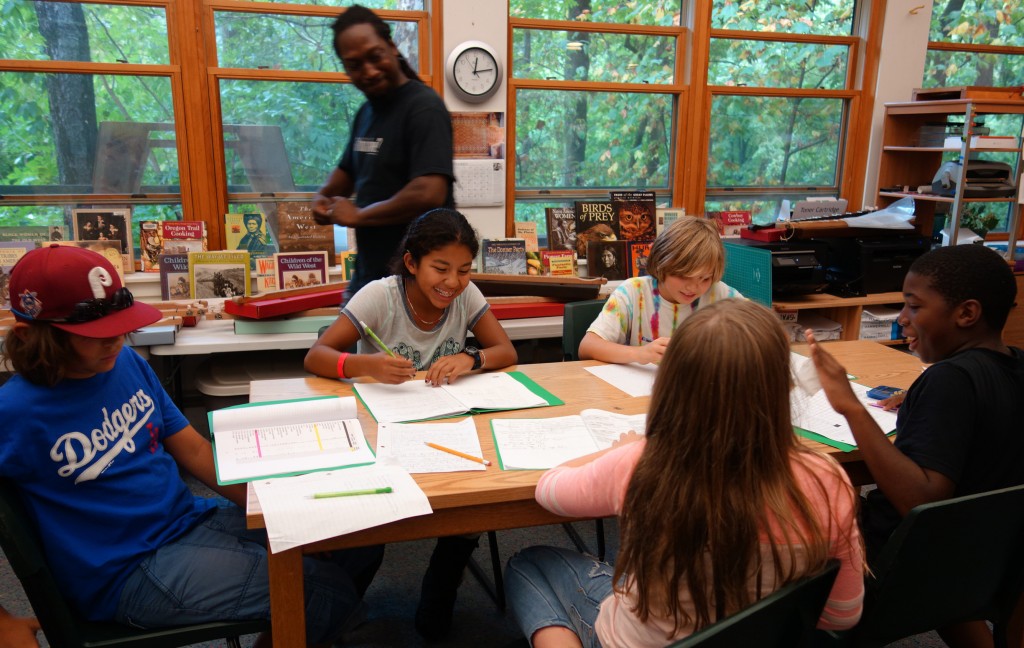Math and social studies have been woven together this week several times. As we were finishing the packing of our wagons, we rolled dice to determine how much cash each family would have. Students rolled a die twice, added the numbers, and multiplied by 10. Most ended up with less than $100. “How much is that?” one student asked, wondering if she were rich or not. We talked a bit about determining the value of money — what it will buy in a specific time and place, and how long one would have to work to earn it. The next day, I gave students an excerpt from an article published in a New York City newspaper in 1851, not long after our westward journey takes place. It described a carpenters’ strike in Philadelphia. The workers wanted an increase of 25 cents per day, which would make their weekly wage rise to $10.50. The article then went on to list the typical living expenses of a carpenter with a wife and three children. After discussing what was a strike and what carpenters actually do, we did some math with the data in the article and found that, even with the increase, the imaginary typical carpenter would still not have enough money to meet basic expenses. What would the family do? We discussed things they might do without and the possibility of going into debt. This led to a discussion of the debate about minimum wage today. Was it needed for people to live above the poverty line? Would it drive out small businesses, or would it give people more money to spend in those same businesses? Obviously, all this is a large topic that cannot be addressed or understood in a single class meeting, but it gives a clear idea of how working with numbers and mathematics in a genuine context leads to a deep and thought-provoking experience.
Continuing with math and social studies, we explored the 4-color theorem by coloring 3 maps that showed the expansion of the United States from the original 13 colonies to the USA now. Students were challenged to color the zones in each map using as few colors as possible. Several were able to share good strategies for keeping the number as low as possible. And yes, the map with the “lower 48” states could be done with just 4 colors. A few students left the room convinced that they would be able to draw a design that would need 5. We’ll be eager to see what they come up with.
In connection with the map coloring, we gave students 2 copies of a page that lists the states and their 2-letter postal codes. Many maps and other informational materials assume that students know those codes and don’t write out the state names in full. We’ll be playing our knowledge-based bingo game starting next week, and the state/code match will be the first topic. Students will have their lists to help them, and the game will enable most students to master the list over time.
A copy of the postal code list went into each of their binders — the big binder that stays in the classroom and the homework binder that travels. The students’ binders gradually become a resource as well as a filing system and a way to transport papers securely. Vocabulary and spelling lists, place value charts, fraction-decimal equivalencies, maps, and other such things will be there to use at home and at school. Their student planner also contains a built-in collection of information that could come in handy, such as a multiplication fact table. Parents may need to remind students that they have all those things when it’s clear that something is needed.
Our dulcimers are all finished, and we have started to work on playing them. Our students have a wide range of music knowledge and experience. These instruments are an excellent way to introduce some things that are new to everyone as well as to consolidate and provide a new application for things that a child may already know. We are starting to play simple songs and also teaching students to tune their instrument. We’re encouraging them to use their ear to figure out other songs on their own, and we have already heard some impressive results!
Our wagons rolled out from Ft. Independence on Tuesday. Several parents have commented that their children are discussing this simulation at home with language that makes it sound quite real. And that’s the idea. I brought in a Dutch oven and a butter mold, two of the items on their packing list. Students could see the three legs that hold the heavy cast iron pot above the coals of the fire and the rimmed lid that makes it possible to put hot coals on top, too, thus turning the pot into an oven suitable for baking as well as being a good container for stews, soups, and the like. The butter mold is one I got at a farm auction many years ago — it’s probably from the early 20th century. We looked at the tight dovetail joints of the box and imagined packing in freshly-churned butter and pushing out a tidy one-pound block.
The big event this week was the decision each team had to make on Wednesday. After a difficult, slow, and very dry couple of weeks, they arrived at the small settlement of Prairie Wells, expecting to fill their barrels with sweet, cool well water that the town always gave away to passing pioneers. Instead, there were armed guards at the wells who wanted $10 per barrel. The extensive drought had made the town concerned about their water, and they decided to charge for it in order to limit what was taken and make sure they had enough for themselves. What to do? Buy the water? Not everyone thinks they can afford it. Let the people who have the money buy it and let the others do without? Share with those who can’t buy? Refuse to pay and go back on the trail hoping to find another source? Rush the guards and try to take the water?
We introduced our procedure for this kind of decision-making . . . Consider the options. List their pros and cons. Think about what is likely to happen instead of what you hope will happen. Think about what a bad action may cost you. And then decide. Students will use this process several times in their journey west.
One more important event of the week was starting to read a novel that the whole group will use: Across the Wide and Lonesome Prairie: The Oregon Trail Diary of Hattie Campbell, 1847. It’s part of a large collection of first-person historical fiction published by Scholastic.

We don’t often ask everyone in our group to read the same book, but this is so well-connected to our own journey that it seems like a good idea. It’s also available as an audio-supported book through Learning Ally, which some of our students use to help them enjoy books that connect to their interests and maturational level but may be too challenging in terms of the reading skills needed just yet.
Students will be asked to read it at their own pace, but some parental reminding will help. It will be an explicit part of our homework on most nights, and the book should come to school each day because there may be some time to read then, too. When they finish the story, we will ask them to write about the ways in which Hattie changed during her journey, giving some examples to support their observations. Students have a vocabulary list to help with the unfamiliar world of the mid-19th century. As students were previewing the book on Wednesday, there were questions already: What’s a camisole? What’s a shivaree? The information they glean from this story should help them bring realistic details into their own diary-writing for our simulation.
And, finally, we have just begun our new chapter book: Watership Down by Richard Adams. This is a beautifully-written long novel about a group of rabbits that leave their warren in search of a new place to live because a housing development is going to be built on top of the warren that has been their home. It connects, of course, with our overall theme of migration this year. It’s a fantasy, but it’s also a complex tale that has a lot in common with human experience, as good fantasies should. (If you know the animated version, you haven’t experienced the original story at all.)
We did more, as always — too much to report here. And this is missing one day’s information because I am posting it on Thursday. I’m taking a personal day on Friday to go to the annual music weekend in the Berkshires that Tony and I help to organize. It’s a delightful gathering of players of accordions and concertinas. We swap songs and tunes in an astonishing range of genres, run impromptu workshops for each other, do an amazingly eclectic concert on Saturday night, and recharge our musical batteries for the year ahead. It’s sort of a festival without an audience. As one of our attendees said many years ago, “I just need to be with my people.” I’ll return to school exhausted but rejuvenated on Monday. In the meantime, your children will be in Mark’s very capable hands. You might ask your child about what the group did on Friday.

